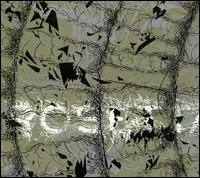- The Galilean Satellites
Infobox Album
Name = The Galilean Satellites
Type = studio
Artist = Rosetta

Released = start date|2005|10|18
Recorded = August 2004–December 2004cite web | last = Elmore | first = Chris | title = Interview: Rosetta | publisher = Indieworkshop.com | date = 2005-10-26 | url = http://www.indieworkshop.com/interviews.php?id=101 | accessdate = 2007-06-13 ]
Genre =Post-metal cite web | title = Rosetta - "The Galilean Satellites" | publisher = Aquarius Records | url = http://www.aquariusrecords.org/cat/r14.html | accessdate = 2007-08-03] cite web | title = Rosetta - "The Galilean Satellites" | publisher = Crucial Blast | url = http://www.crucialblast.net/webstore/titles_r.html | accessdate = 2007-08-03 ] cite web | last =Butze | first = Sean | coauthors = Josh Coppola | title = Rosetta: A Metal Odyssey | publisher = SonicFrontiers.net | date = 2007-09-05 | url = http://www.sonicfrontiers.net/php/story-23.html | accessdate = 2007-09-06 ]Sludge metal
AmbientSpace rock cite web | last = Rivadavia | first = Eduardo | url = http://www.allmusic.com/cg/amg.dll?p=amg&sql=10:u69fs38ra3ng | publisher =Allmusic | title = "The Galilean Satellites" | accessdate = 2007-01-19]
Art metalcite web | last = Jackowiak | first = Jason | title = Rosetta: "The Galilean Satellites" review | publisher = Splendid Magazine | date = 2005-12-30 | url = http://www.splendidezine.com/review.html?reviewid=1134384689119578 | accessdate = 2007-06-13 ]
Length = 118:14
Label = Translation Loss
Producer =
Reviews =
*Allmusic rating|3.5|5 [http://www.allmusic.com/cg/amg.dll?p=amg&sql=10:u69fs38ra3ng link]
*Blabbermouth.net (8/10) [http://www.roadrunnerrecords.com/blabbermouth.net/showreview.aspx?reviewID=534 link]
* Deadtide.com [http://www.deadtide.com/reviews/albums/page.php?id=2940 link]
*Decibel Magazine (favorable) [http://www.decibelmagazine.com/reviews/jan2006/rosetta.aspx link]
* Decoymusic (favorable) [http://www.decoymusic.com/vb/showthread.php?t=4657 link]
* Music Emissions rating|5|5 [http://www.musicemissions.com/artists/albums/index.php?album_id=7332 link]
* Splendid Magazine (favorable) [http://www.splendidezine.com/review.html?reviewid=1134384689119578 link]
Last album = Demo
(2003-04)
This album = "The Galilean Satellites"
(2005)
Next album = "Project Mercury"
(2007)"The Galilean Satellites" is the first studio album by American
post-metal band Rosetta, released in 2005 on Translation Loss Records.The album is two discs long and the track lengths on each disc correspond to each other, indicating that the band intended the albums to be played at the same time. Disc one is in a heavy metal style while disc two is ambient noise.
Production
Originally, the band intended to record a standard one-disc album and use the ambient pieces as segues; however, the band had enough material and the approval from Translation Loss to record a second disc. This setup was inspired by Neurosis' album "
Times of Grace ".Scott Hull ofPig Destroyer andAgoraphobic Nosebleed fame was originally hired to master the album; however, the band's dissatisfaction with his work caused him to leave the project; Weed did the mastering himself instead.Release
The album was first released in 2005 in a
digipak format, then later in 2006 in a standard jewel case, both on Translation Loss Records. A release for the album on vinyl was hopeful, but a release date is currently not set. [cite web | title = Interview: Rosetta | publisher = Probably Smug | date = 2007-01-22 | url = http://www.probablysmug.com/interview-rosetta/ | accessdate = 2007-09-06 ] Additionally, an acoustic remix of "Au Pays Natal" was also recorded, but is not included in the album; rather, it was released as a download-only track on the band's website. [The album's liner notes contained the URL of a "secret" section of the band's website which allowed fans who purchased a copy of the album access to the acoustic "Au Pays Natal", lyrics, and photos.]A 5.1
surround sound DVD-R version of the album was also made by the band. The mix featured the first disc in the front speakers and the second disc played at the same time in the rear. The first version, a plain disc, was sold at shows in 2006, while it was re-released for mail distribution in 2006 and 2007. The DVD also included three live videos. [ [http://www.rosettaband.com/rosettaweb/disco.html Official discography] ] These editions were very limited and are no longer available.The album's
gatefold artwork was designed byHydra Head Records founder and artistAaron Turner , after Translation Loss themselves asked Turner to create the art. The band members have stated that they are fans of Turner's work (Isis in particular, to which Rosetta is frequently compared).Themes
The liner notes contain no lyrics; only the phrase "These songs are about a space man", indicative of the band's fascination with
astronomy . The lyrics themselves also seem to be (on one level) about space travel, and make many references to Europa, one of theGalilean moons . The band themselves have stated that the songs tell a story about a man who becomes dissatisfied with the world around him and leaves to find a place of solitude (Europa). However, upon reaching it, he realizes that he left behind things that were meaningful to him.The track names on disc two all are names of different stars:
Deneb , Capella,Beta Aquilae ,Ross 128 , and Sol (theLatin name for our ownsun ). The track names on disc one are all French phrases (apart from "Europa", since "Absent" is the same in English and in French).Track listing
tracklist
headline = Disc one
all_writing = Rosetta
title1 = Départe
note1 = lit. "far away"
length1 = 8:13
title2 = Europa
length2 = 10:25
title3 = Absent
length3 = 9:45
title4 = Itinérant
note4 = lit. "traveling"
length4 = 16:14
title5 = Au Pays Natal
note5 = lit. "to the native land/country"
length5 = 13:32tracklist
headline = Disc two
title1 = Deneb
length1 = 8:13
title2 = Capella
length2 = 10:25
title3 = Beta Aquilae
length3 = 9:45
title4 = Ross 128
length4 = 16:14
title5 = Sol
length5 = 15:28Personnel
* Michael Armine – sound manipulation, vocals
* David Grossman –bass guitar
* Bruce McMurtrie Jr. – drums
* J. Matthew Weed –electric guitar ,violin , mastering
*Aaron Turner – artworkReferences
Wikimedia Foundation. 2010.
